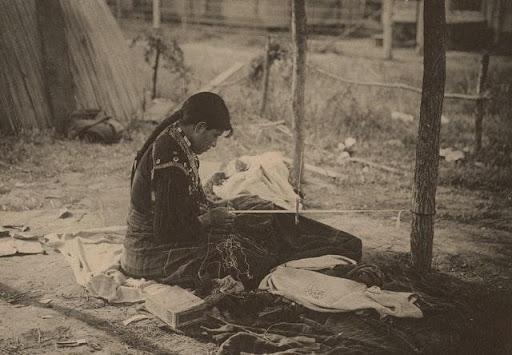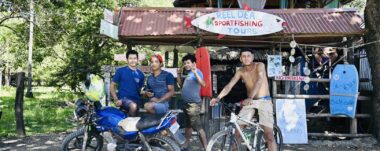Indigenous Peoples: The Native Presence in Costa Rican Territory

April 19, Costa Rica Aboriginal Day
A culture, language, tradition and indigenous religion kept alive thought efforts to achieve a representation of the idiosyncrasy and folklore of Costa Rica.
Within the country, there are 8 indigenous peoples: Bribis, Cabécares, Malekus, Chorotegas, Huetares, Ngäbes, Bruncas and Térrabas distributed in 24 territories, making up only 2.4% of the national population. They are located mostly in the south of the nation, some especially in the canton of Buenos Aires, Puntarenas province. Also around the Cordillera de Talamanca, and mostly reaching the neighboring country, Panama.
Throughout history, these indigenous people have suffered, witnessed physical and territorial limitations and discrimination, which is why the Costa Rican Aboriginal Day was created. Its purpose is to recognize what these people have contributed to the country, from culture to environmental protection, because the richness of these civilizations, their connection with the natural and spiritual world is a heritage that preserves a piece of intercultural diversity. New generations must preserve the historical memory to avoid cultural degradation. Discrimination goes hand in hand with ignorance and governments know this, so they are beginning to try to raise awareness and sensitize Costa Ricans by promoting a multicultural and multiethnic approach.
People and their Art
Ngäbe
Under the myth of the Magata, a snake that dwells in its waters as part of their ancestral spirituality, finds inspiration their art, their costumes and their different designs in the chácaras. These last ones are weavings based on the knowledge of generations, handmade to manufacture various products such as bags, wristbands and bracelets, among others.
Bribri
Before the knowledge of metalworks and their introduction into daily life, stone was the main source of creation. Sculptures and pre-Columbian metates (or grinding stones) were just some of the things made by these people. Their most important aristic expression is basketry and the manufacture of musical instruments, for which they use various natural materials.
Cabécar
The chichada, a gathering to drink the famous chicha that represents sociability and solidarity after performing the traditional dance called Bulciqué. Here, instruments such as the Sabak, the maraca and the Dúk are part of the tradition.
Térrabas
Here, the deep and spiritual relationship with the earth, especially with water is an essential characteristic, since nature itself provides them with natural elements such as stones in the form of large perfect spheres, legends and myths that revolve around an enchanted lagoon and the Tiger’s Hand, a revered mark on top of a mountain. On the other hand, the jícaras (small pot from a dried calabash) are worked with xylography to capture the hidden experiences of the people.
Maleku
The staple craftsmanship of the Maleku people that most nationals can recognize are their masks, made from wood and painted with bright colors. The masks represent their deities, animals such as the jaguar or the nature that surrounds their communities and are traditionally used during their dances and rituals, symbolizing a connection between humans and nature as well as with the spiritual world. Women are the main mask makers, using natural dyes to decorate them. Similar methods and motifs are also used in the creation of drums, used mainly for ritual celebrations.
Chorotegas
The red clay characteristic of the area inhabited by the Chorotega people has been used to create unique ceramic pieces for more than 4,000 years. It is mainly the Chorotega women who are dedicated to the elaboration of ceramics with varied images, originally with ritual and religious symbols, but that were progressively replaced with animal motifs after the arrival of the Spaniards. Some of the most common images are snakes, crocodiles and jaguars. Red, black and white dyes are used to decorate these, which are combined to create other shades as well. The ceramics are created for both everyday and decorative use, also showing shapes alluding to nature. Currently, some stores where the handicrafts are sold offer workshops to visitors so they can experience the traditional process of creation.
Huetares
The villagers are known mainly for their textile skills. Mastate, a fibrous tree used for the manufacture of fabrics, is the main medium used for the manufacture of their clothing. This is not the only one, as the community uses many natural alternatives to make textile materials and create different dyes such as purple, yuquilla or chirrite. On the other hand, tule, estococa, millo, burío and cabuya are some of the most popular materials used to make hammocks, hats and baskets.
Rights and Laws That Protect Them
In Costa Rica, these groups began to fight for their rights at the end of the 80’s and i wasn’t until the beginning of the 90’s that they managed to be considered citizens.
Law 6172 is in charge of the autonomy and rights of these communities.
Initially, the Indigenous Law was established in 1977, where the formal representatives of the native peoples are the same indigenous councils elected by their communities. Later, in 1978, it was established that the formal representation organizations for each indigenous territory, called Integral Development Associations, have judicial and extrajudicial representation, being local governments. This condition originated power struggles between sides, responding more to individuals than to indigenous and community organizations, losing credit and interest. This is not the only entity that has been left behind, since the National Commission of Indigenous Affairs is widely criticized for being an instance directed and administered by people from the Great Metropolitan Area.
Such a situation generates the creation of many indigenous associations that are usually more representative for their communities.
Land Recovery
In 2010, the process of land recovery began when indigenous leaders were evicted by the Costa Rican Congress, due to a lack of response to the draft Law for the Autonomous Development of Peoples.
Given the lack of response from the Assembly, the recuperators set up camps within the perimeter of the territory on the illegally occupied lands, but they are denounced for usurpation and this claims are supported by the authorities. This generates territorial conflicts in the Southern Zone, since for the non-indigenous population, land is nothing more than a means of production. Forests are destroyed for cattle or timber exploitation for profit. On the other hand, for the indigenous people, land is the property of the collective, not of the individual. In other words, it is a means of subsistence on which the cultivation of food and the reproduction of culture depends. The value of these lands is due to the link with the earth, where the protection of forests, animals and water sources is prioritized over the exploitation of resources for economic purposes.
Synthesis
- In Costa Rica, there are eight indigenous peoples, each with characteristics that identify them.
- These peoples began to fight for their rights at the end of the 80’s and it wasn’t until the beginning of the 90’s that they were considered citizens.
- The process of land recovery is a ongoing struggle.
Bibliography
https://es.wikipedia.org/wiki/Pueblos_ind%C3%ADgenas_de_Costa_Rica
https://www.corteidh.or.cr/tablas/R08062-4.pdf
https://si.cultura.cr/manifestaciones-culturales/artesania-tradicional-ngabe.html
https://ifigeniaquintanilla.com/
https://si.cultura.cr/manifestaciones-culturales/artesania-en-ceramica-chorotega.html
https://mep.go.cr/sites/default/files/tomo_5.pdf
Authors
Zelda Walters and Angie Loveday for Sensorial Sunsets
Navigate articles





